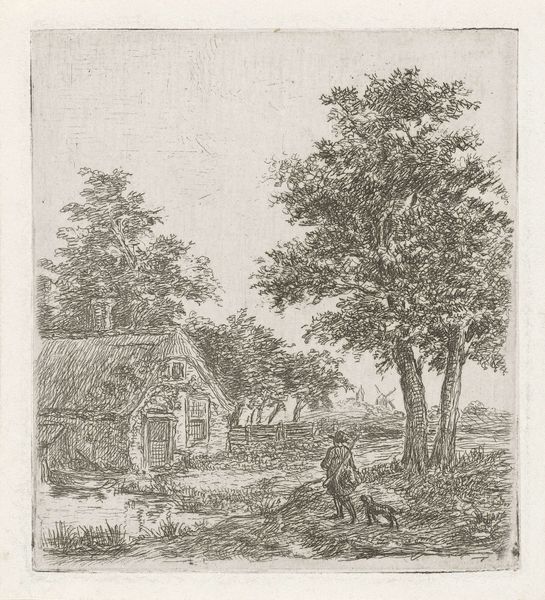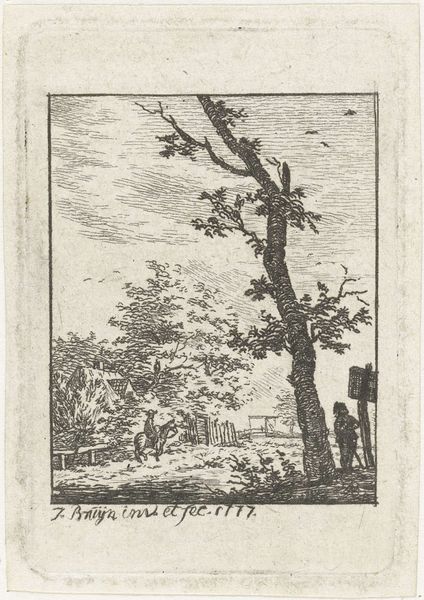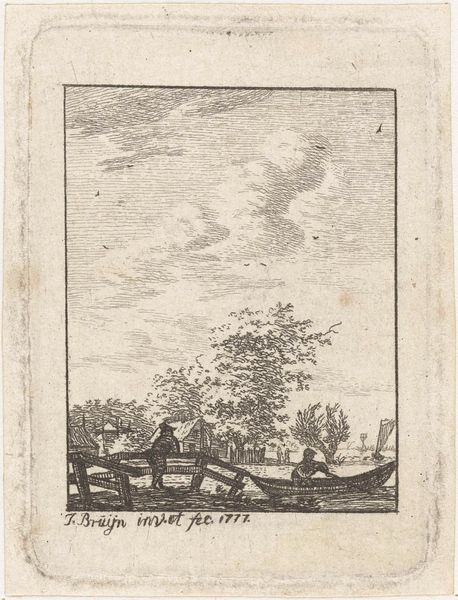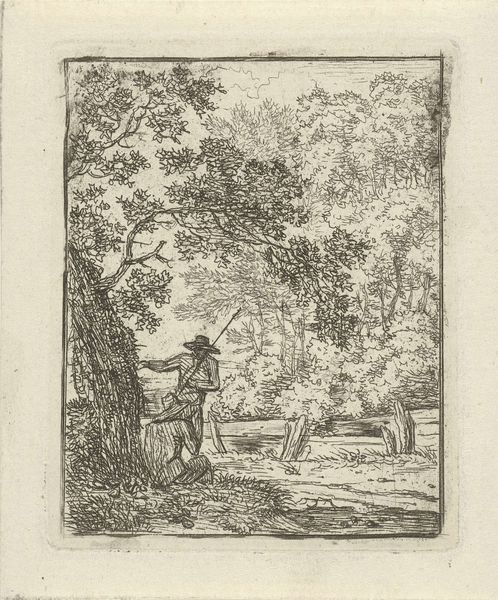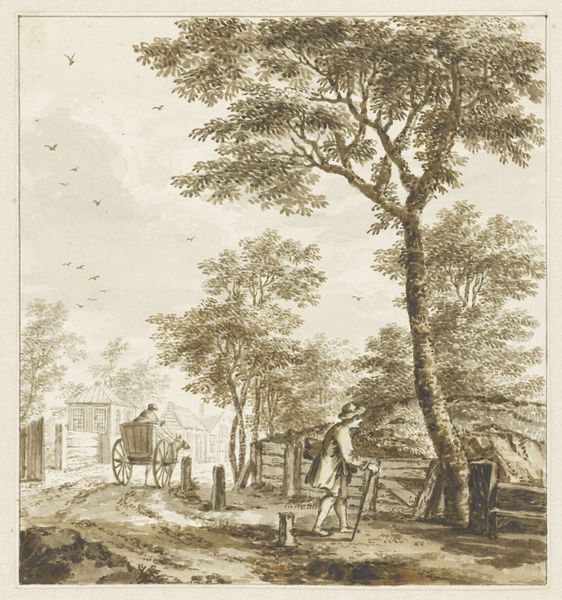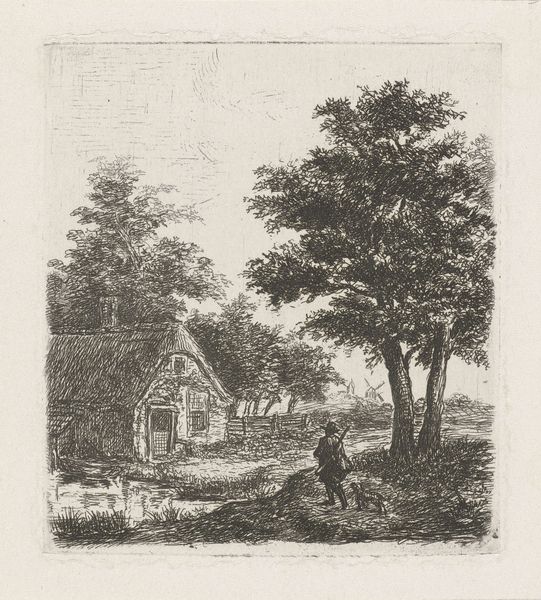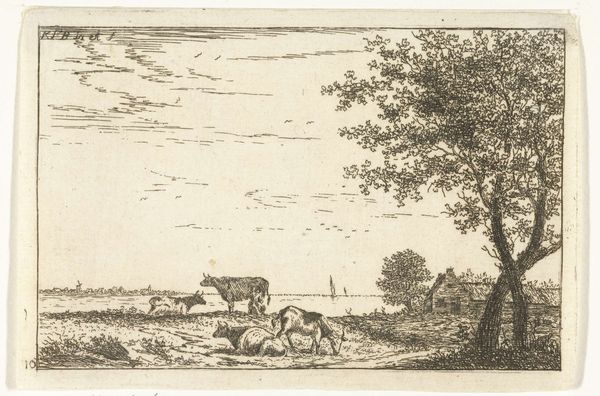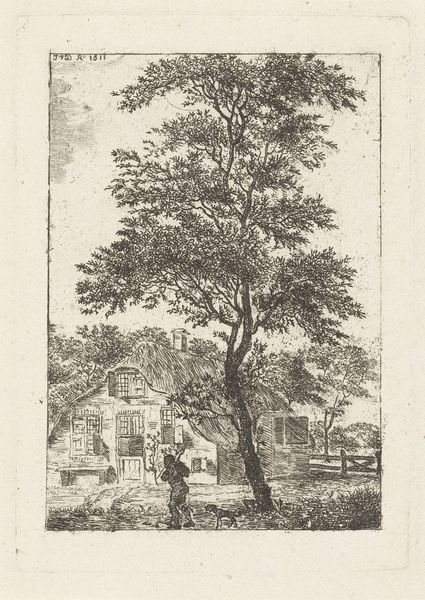
print, engraving
# print
#
landscape
#
engraving
#
realism
Dimensions: height 52 mm, width 37 mm
Copyright: Rijks Museum: Open Domain
Curator: Let’s take a moment to look at "Landschap," or "Landscape," an engraving created by Johanna de Bruyn in 1777. Editor: My immediate feeling is of a contemplative quiet. The etching captures a subdued realism, but there's also an understated drama in the contrast of the intricate foreground and that somewhat unsettling sky. Curator: Exactly. De Bruyn, primarily known for her graphic work, captures a specific rural scene, likely around Haarlem. Look closely at how the details are rendered through engraving—the delicate hatching of the foliage and building texture suggests labor-intensive precision, a sharp contract to our current fast-paced production and consumption. Editor: And note the figures: their presence turns this scene into a lived space, hinting at narratives beyond the visible. Are they enjoying leisure, seeking refuge, or just simply occupying the margins of labor? Consider that rural landscapes at the time were shaped by evolving class dynamics and economic activity—her choice to portray this slice of life, these figures within it, it's all carefully chosen. Curator: De Bruyn's material choices and engraving process reflects the traditional craftmanship prevalent at the time, yet the detailed depiction shows a keen observation, blurring the line between objective rendering and idealized pastoral scenes. She utilizes engraving to achieve incredible textural details in a way lithography later allowed for easier access. Editor: The contrast between the ordered building on the left, the natural, wild tree, and the figures themselves evokes tensions: tradition and change, individual freedom and societal constraint. Given the rise of Enlightenment ideals, and, with it, a discourse around rights and representations, did de Bruyn offer a subtly charged glimpse of societal hierarchies? Who had access to leisure and resources, and who bore the weight of that access? Curator: Interesting! In terms of technique, the limited tonal range achieved with just a few tools displays remarkable control over the medium. Thinking of the production process is revealing – this isn’t just a painting; it's a print that would allow multiples to be made. Editor: By drawing attention to the social conditions of the depicted landscape, and, crucially, by acknowledging our place as active viewers shaping its interpretations, it deepens our understanding beyond the aesthetic appeal. Curator: I agree. Considering all these elements certainly highlights the careful skill and production that defines de Bruyn's practice, something easily overlooked at first glance. Editor: It's about looking beneath the surface, asking critical questions about the power relations informing representation in the 18th century and how that persists today.
Comments
No comments
Be the first to comment and join the conversation on the ultimate creative platform.

